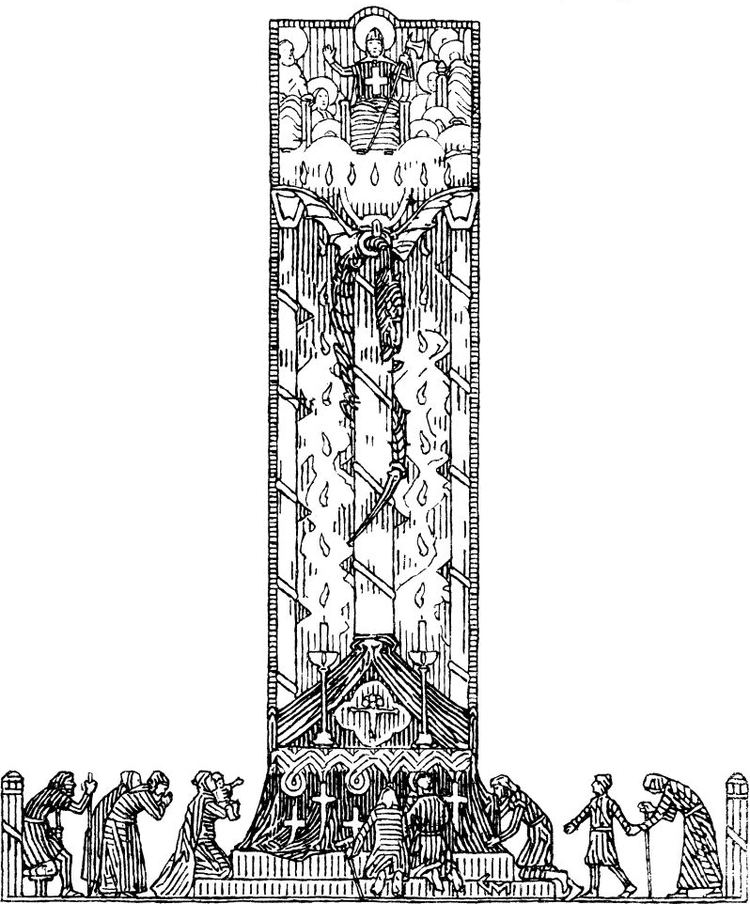 | ||
Rex Perpetuus Norvegiae (Latin), i.e. Norway's Eternal King) is a term for King Olaf II of Norway also known as Saint Olaf (Olav den hellige) .
Background
In written sources, the term Perpetuus rex Norvegiæ appears from the second half of the 12th century in Historia Norvegiæ.
The 1163 Succession Law (Tronfølgeloven av 1163) stated that all kings after King Magnus I, the son of Olaf II, should be seen as vassals holding Norway as a fief from Saint Olaf.
Olaf's great-nephew, King Magnus III of Norway and of Mann and the Isles, reportedly was the first king known to use the Norwegian lion in his standard although Snorri Sturluson is the only source for this. The first instance of the lion bearing an axe is found in a seal of King Eric II of Norway (1285). The axe represents Olaf II as 'martyr and saint'.
